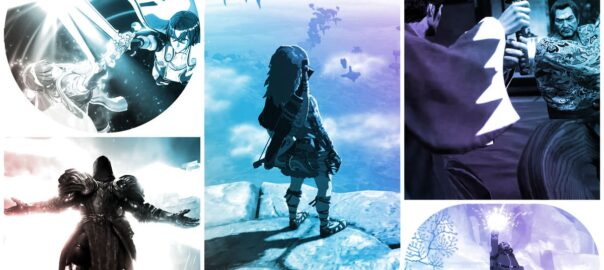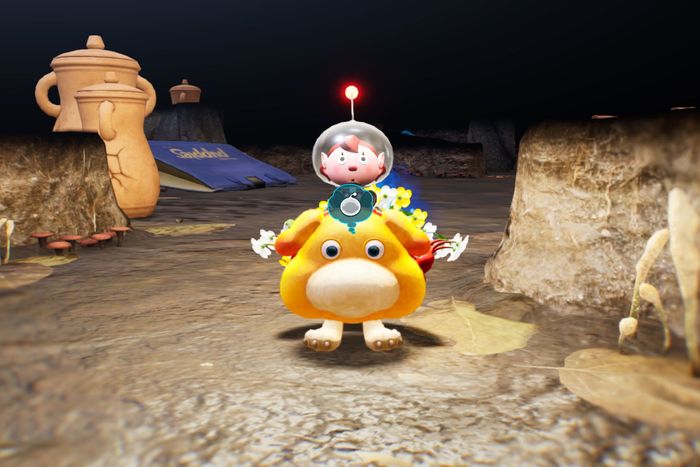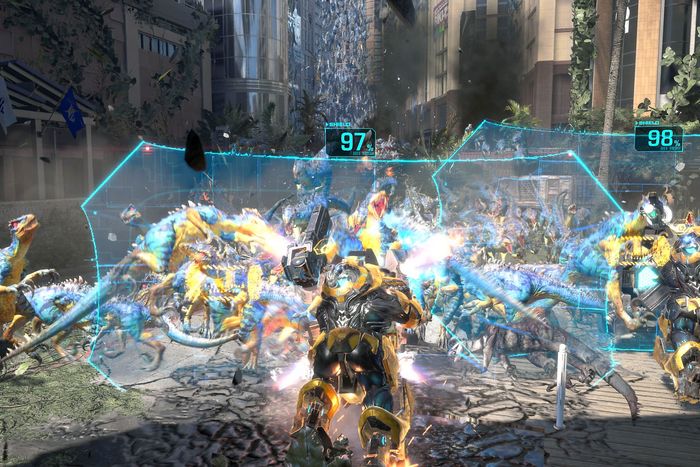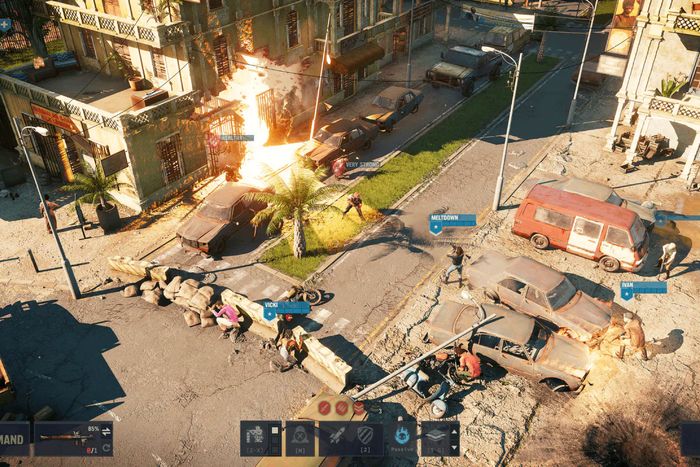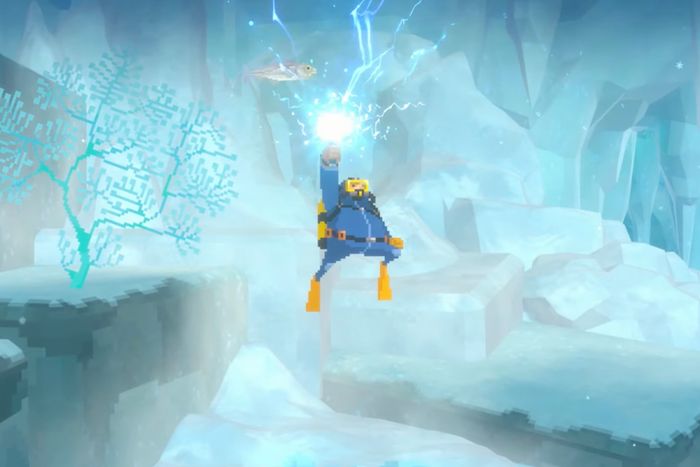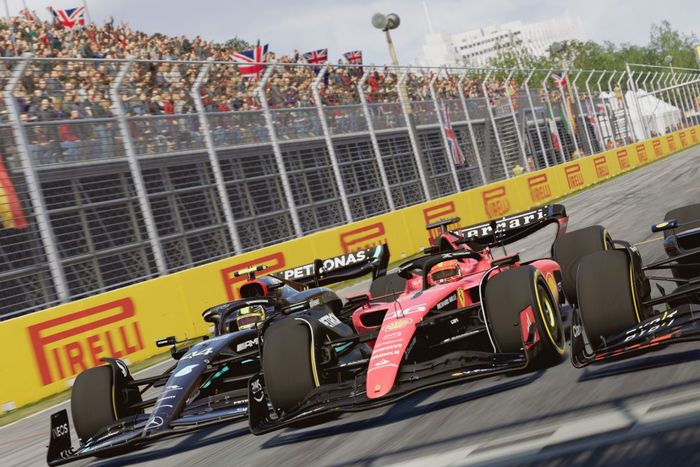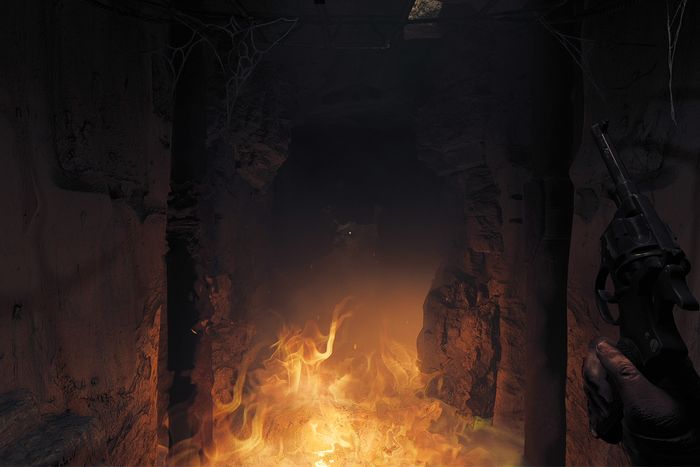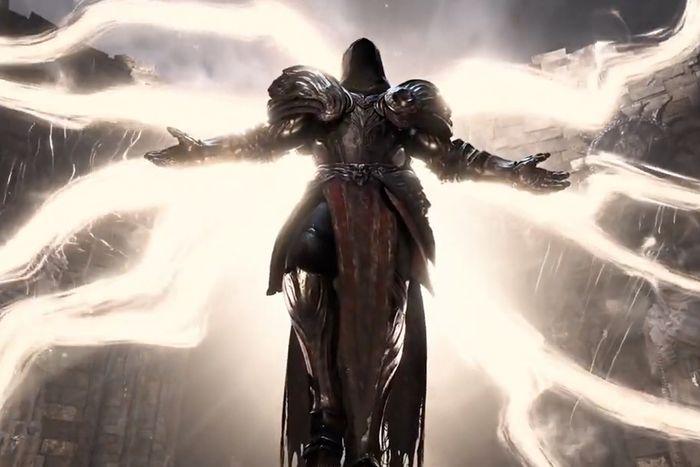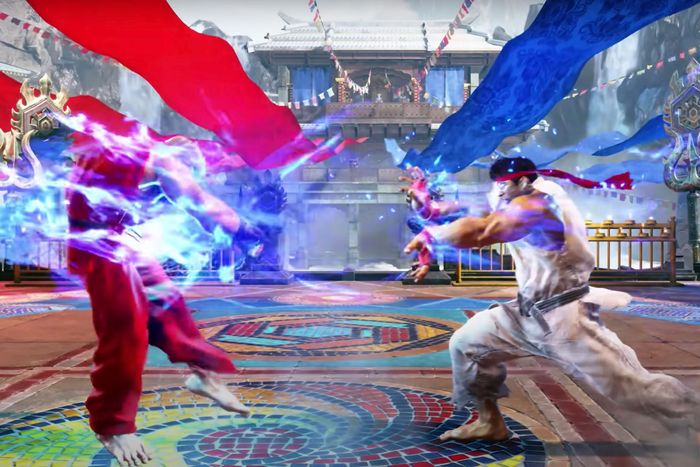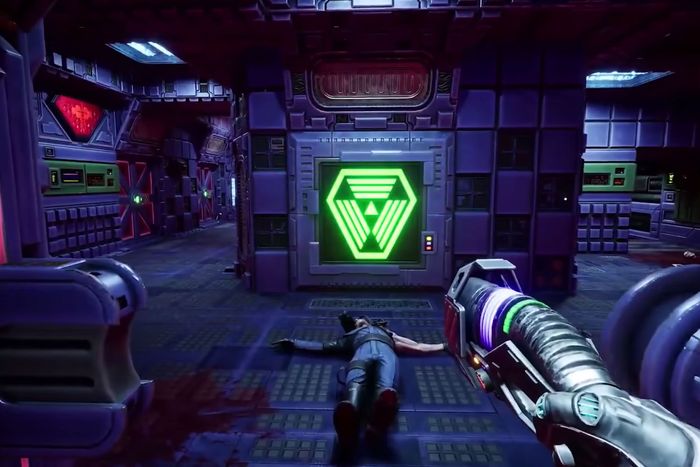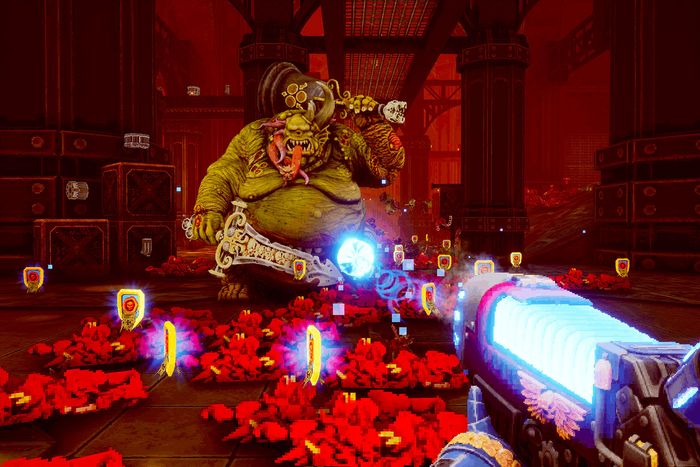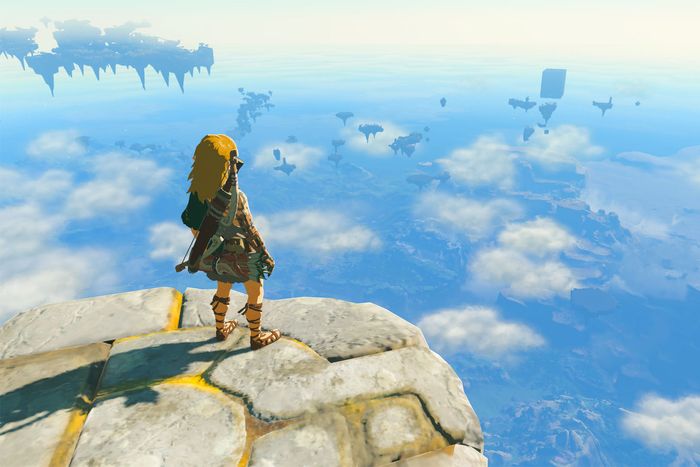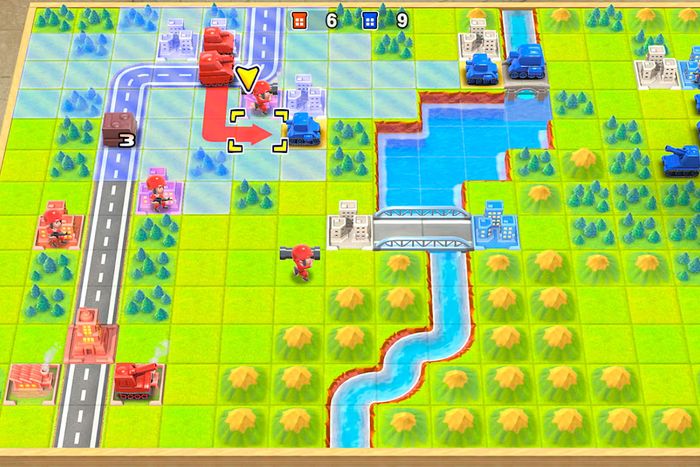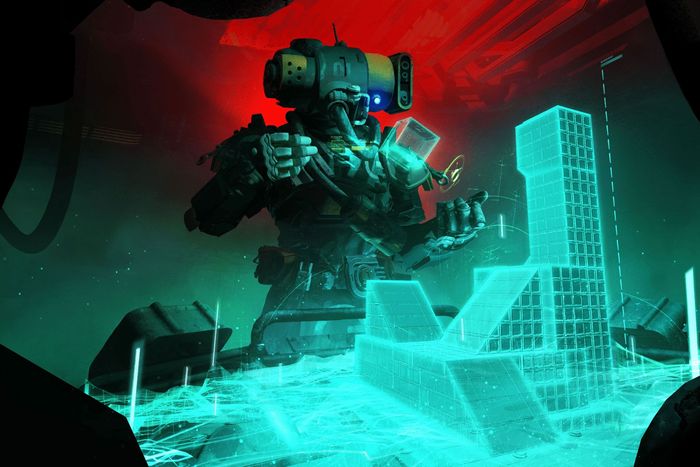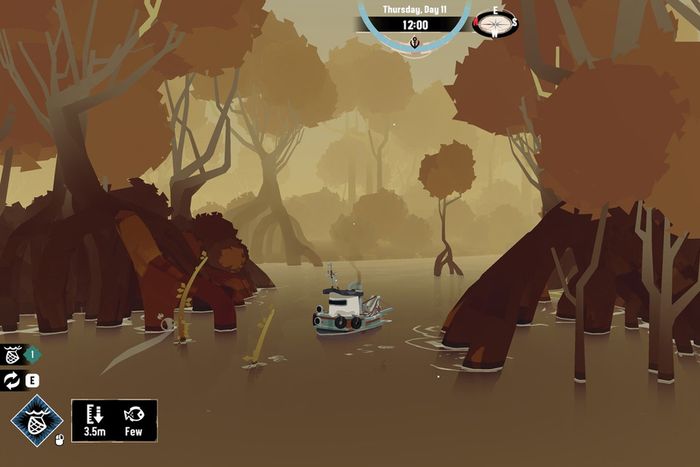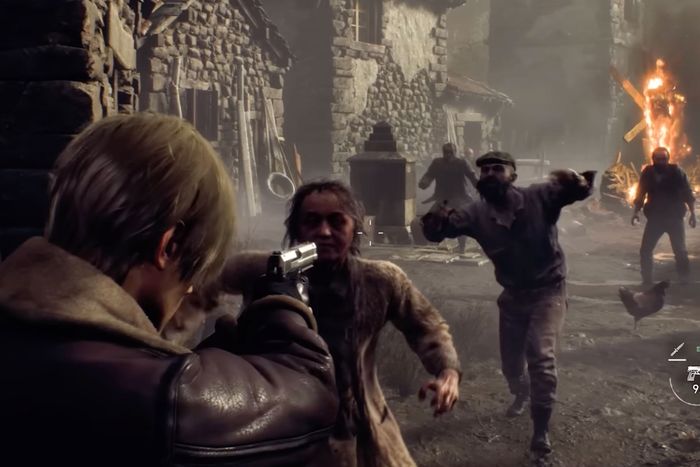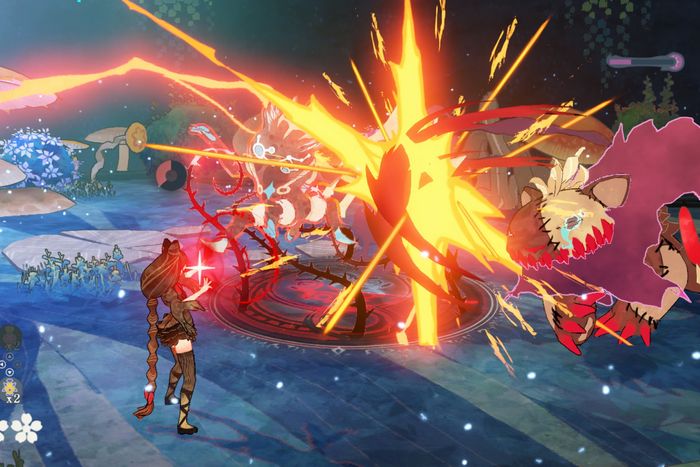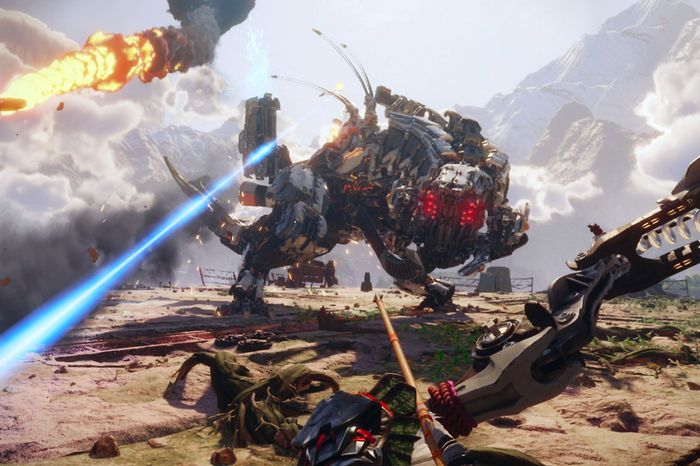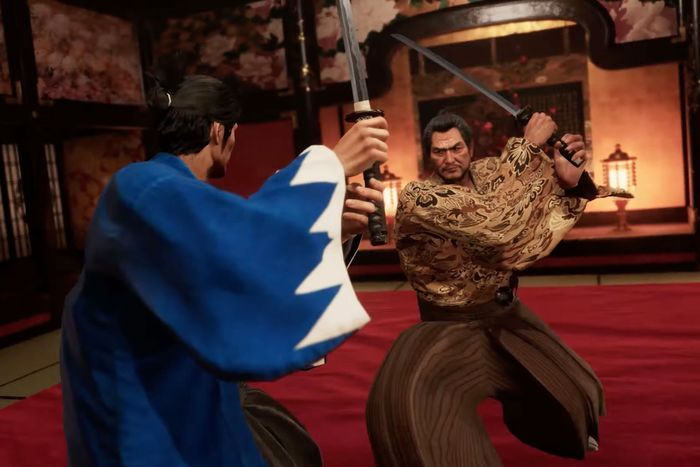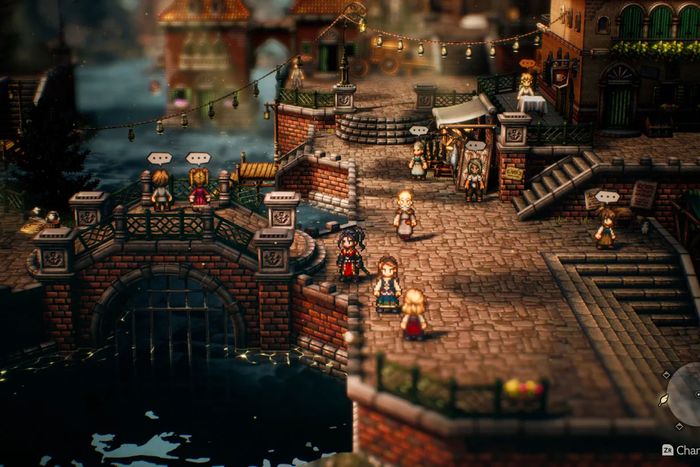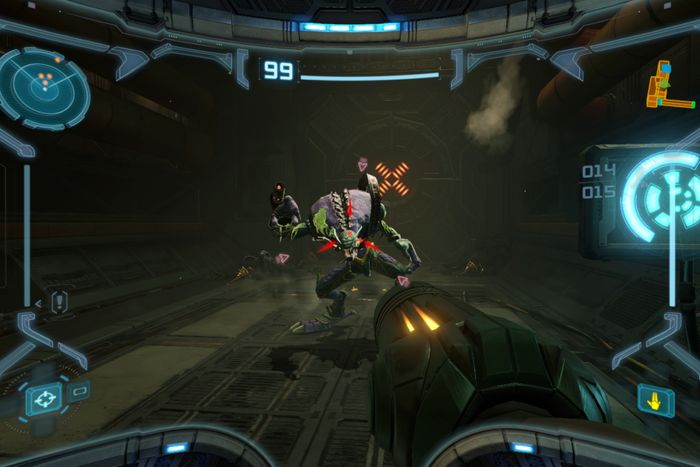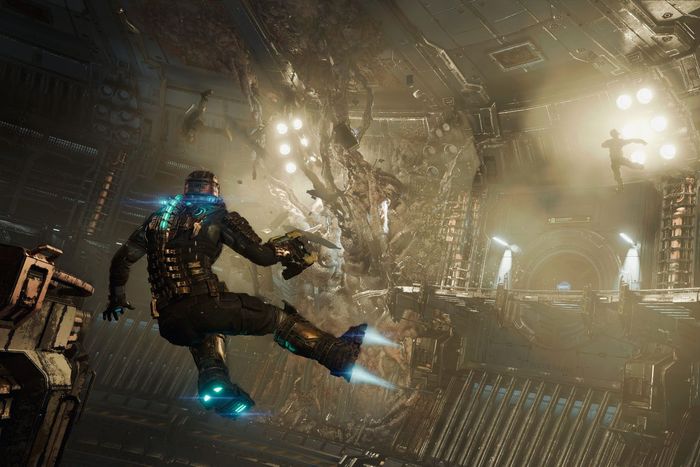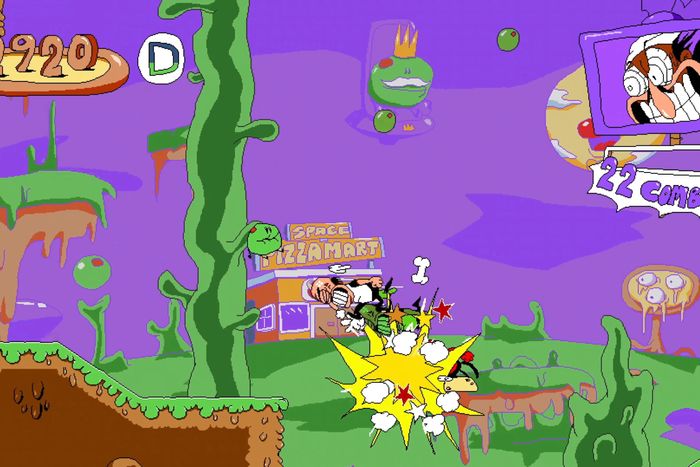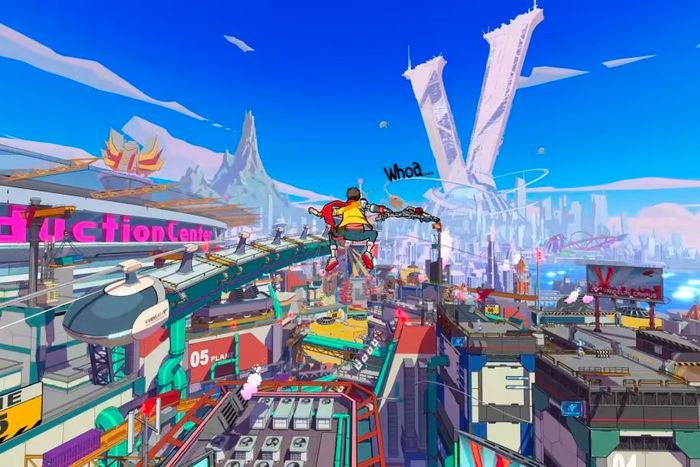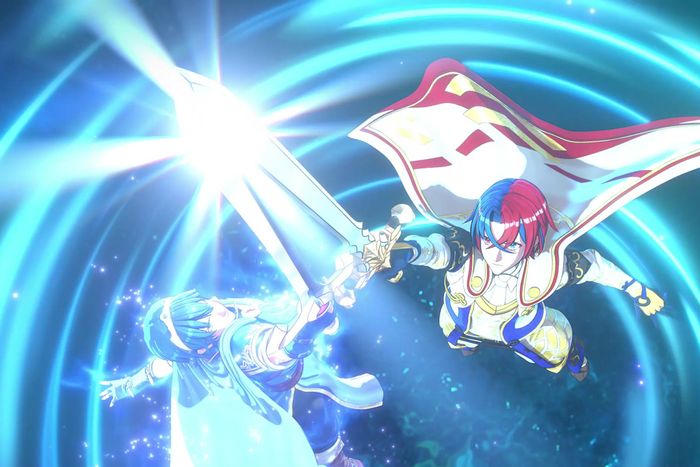[ad_1]
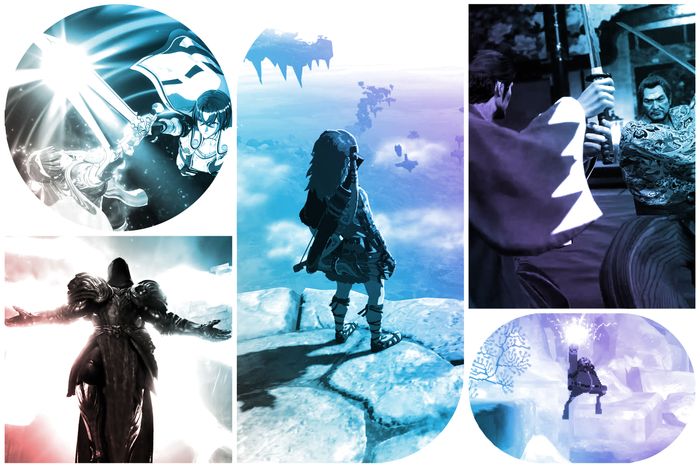
Photo-Illustration: Vulture; Photos: Respective Developers and Publishers
The first half of 2023 has been surprisingly flush with exciting video games. Yes, some megatons, such as Bethesda’s Starfield, are still off in the distance, but spring and early summer have contained offbeat indies, consecrated remasters, and long-gestating sequels to keep us plenty occupied. If you take our recommendations to heart, you’ll soon be orchestrating World War II battlefronts, gallivanting around industrial Japan, getting behind the wheel of a Formula 1 car, fighting dinosaurs in a mech suit, and enjoying a bit of Hylian engineering with Link and Zelda. That, my friends, is a great way to get through summer.
The following titles are listed by release date with the newest games up top.
Photo: Nintendo
The microbial world of Pikmin has always taken a back seat to Nintendo’s illustrious pantheon of Mario, Zelda, and Metroid, which is to say, nobody should be surprised that it’s taken the company a decade to make the fourth entry in this series. The fundamentals here are the same from what you remember on the GameCube. You are an inch-tall alien explorer on an abandoned, post-collapse planet Earth, who is able to communicate and organize a race of tiny, delightfully cute creatures who can be ordered to retrieve the world’s “treasure” (read: detritus left behind by the conspicuously absent humans). Think of it as a light, colorful real-time strategy game; sometimes you’ll need to wield a certain type of elemental Pikmin (like the turquoise ones who can freeze water) to clear a blocked path. Elsewhere, you’ll need to muster them in tight battalions to fend off the flesh-eating amphibians who want you dead. Pikmin might not be Tears of the Kingdom (what is?), but it’s a tiny triumph.
Photo: Capcom
Exoprimal is stupid. Let’s get that out of the way up front. This is a video game about piloting sinewy, Evangelion-esque mechs and murdering a million velociraptors. One of the power suits has a mane of molten-hot hair; another wields a sword about the size of a school bus. Exoprimal is also, shockingly, multiplayer-only. Two teams of five (divided into a balanced makeup of League of Legends–style classes) have been tasked with eliminating the dinosaurs. Whoever does it most efficiently scores the top prize. You can drill down into the nuts and bolts and develop a thoughtful squad with interlocking abilities, lifting you closer toward Exoprimal immortality. But a better idea might be to sit back, relax, and watch the numbers get higher and higher as the screen-filling mob of Jurassic-era creatures fall to your weapons.
Photo: THQ Nordic
Jagged Alliance 3, a new entry in the beloved, long-dormant PC series, is a strategy game in the XCOM sense. Yes, your team of mercs will be scuttling through the jungle in order to line up firing lines on whatever band of smugglers, terrorists, or rival PMC you’re currently targeting. But so much of the fun occurs back in base camp, as you slowly develop your own crew of malcontents into superior versions of themselves. In one scene, the gang is disrupting a diamond mine heist. In the next? They’re kicking back around the bonfire, bullshitting with one another, restoring some of their vitality. Jagged Alliance 3 brings to mind other ancestral PC heavyweights like Baldur’s Gate and Icewind Dale, in the sense that the isometric perspective doesn’t betray the character development. A new adventure awaits in every tile.
Photo: Mint Rocket
We love an indie game that tries to be everything at once. Dave the Diver is an ocean-exploration game; it’s also a restaurant-management sim, a visual novel, and a 2-D shooter, all rendered in gorgeous pixel art. We are Dave, a rotund scuba expert who must secure his own stock for his sushi bar on dry land. He snares bluefin tuna by day and concocts new maki rolls by night. Along the way, Dave will get wrapped up in a ridiculous seafaring conspiracy — growing ever more fantastical and folklorish the deeper you get — which provides just enough scaffolding to keep some intrigue on this adventure. All the parts miraculously come together, lending the game a very Civilization-like sense of one-more-turn compulsion. In a blink of an eye, it’s 3 a.m., but you’re still not quite ready to save and quit until you purchase that upgraded oxygen tank you’ve been eyeing.
Photo: EA Sports
America is currently in the midst of an F1 boom. Perhaps in part because of shows like Netflix’s Drive to Survive, friends and family members alike are becoming familiar with European last names and arcane aerodynamic minutiae. So perhaps it makes sense that the official video-game appendage of the brand has become increasingly friendly to outsiders. The big new feature in F1 23 is a genuine, honest-to-God story mode — called Braking Point — in which players take control of an amateur driver and an upstart team eager to make a name for themselves in the cutthroat open-wheel scene. Combine that with revamped controls to make gamepad traction easier than ever and you just might finally find yourself sinking deep into a hard-core racing sim for the first time in your life — Mario Kart can’t compete with these speeds.
Photo: Epic Games
Amnesia: The Dark Descent reinvented the horror genre back in 2010 with an emphasis on thick, spiraling dread. The player was small, weak, and harried by creeping abominations — your only offense was to run and hide. The Bunker is the best game released under the Amnesia banner since that hallowed original, and it bravely steps out of its established formula. We play a soldier in World War I, hunkered down in a bunker to avoid a terrifying (but light-sensitive) monster known only as the Beast. Mechanically, that means we must leave our safe haven to scrounge up supplies to keep the bunker up and running, adding a dose of resource management and exploration to a series previously defined by long, spooky corridors. It’s a bold evolution for Amnesia, proof that this hellscape isn’t exhausted just yet.
Photo: Blizzard Entertainment
It has somehow been more than a decade since Diablo III, a game that was famously pilloried for being too colorful. Blizzard’s grisly series is caked with marauding undead, rivers of blood, and tortured souls, so a few stray patches of green grass were taken as an affront to the diehards. The company took note with its long-awaited sequel. Diablo IV just might be the grimmest video game Blizzard has ever made. You’ll scour the muck in dirgeful dungeon crawls, flaying a horde of chittering demons in a single blow, all in pursuit of the almighty loot. Diablo IV has altered its blueprint ever so slightly to take the shape of a genuine MMO — with player characters sprawled all over the map. There is nothing quite like item envy to get you hooked. Hell is dark, but you might want to stay here for a very long time.
Photo: Capcom
The much-anticipated Street Fighter 6 has taken some bold risks for a series that has never strayed far from its austere arcade roots. There is a Yakuza-like RPG campaign, World Tour, in which you will cook up a customizable character and rendezvous with various Capcom luminaries. This dovetails nicely into the new multiplayer salon, which functions a bit like a capital city in an MMO. You rub shoulders with other Street Fighter upstarts and sit down at virtual (yes, virtual) arcade cabinets when you’re ready to rumble. But none of these features would work if the basic fighting mechanics had lost their splendor, and I’m pleased to report that the nervy, pugilistic, feint-and-counterpunch magic of Street Fighter is right at home in 2023. Best of all? A new control scheme vastly simplifies special move inputs, allowing all of our old thumbs to summon up a Shoryuken.
Photo: Nightdive
System Shock is one of the most important video games of all time. It arrived in 1994, during the zenith of the first-person-shooter boom, but unlike schlocky-meathead run-and-guns such as Doom and Duke Nukem, System Shock fine-tuned a slow-paced, atmosphere-heavy campaign in which an icy sci-fi story slowly comes into view through a mosaic of audio logs and text clippings. It has also, unfortunately, not aged very well, which is why it’s such a blessing that the remake auteurs at Nightdive Studios have put together a to-the-studs conversion that replaces the janky controls, questionable voice-acting, and flimsy graphics with a glistening modern sheen. It turns out the spirit of System Shock was always indelible. The game just needed a fresh coat of paint.
Photo: Focus Entertainment
On the other end of the spectrum from System Shock lies Warhammer 40,000: Boltgun, a first-person shooter so brawny and steroidal it feels like it was directly imported from 1998. Boltgun ditches modern aesthetic contours for a vintage 2-D sheen — like a particularly juiced-up Doom mod. You are playing a Space Marine, plucked from the Warhammer canon, and you will pulverize the cretinous cosmic demons in your path with a buffet of ridiculous weaponry (a chain-saw–sword hybrid, a shotgun the size of a leg). There is not a ton of nuance in Boltgun, nor should there be. This is a throwback for anyone who has grown weary of empty battle-royal maps and turgid Call of Duty experience-point grinds. Grab your gun and lay waste.
Photo: Nintendo
With 2017’s Breath of the Wild, Nintendo ditched its tried-and-true Zelda formula entirely and built an earthen, meditative adventure out of a limitless incarnation of Hyrule. Link was no longer forced to go from dungeon to dungeon, deciphering clockwork puzzles in a linear march to the finish line. Instead, after getting your bearings, you simply choose a direction on the horizon and see what you might discover. Tears of the Kingdom somehow doubles Breath of the Wild’s expansive scope. The direct sequel is dotted with floating islands in the sky and benthic caverns deep underground, all of which can be explored with karts, flying machines, and hot-air balloons that can be fused together with surprising intuition. Nintendo has totally reinvented Zelda twice in six years, and both times it wound up with a new classic.
Photo: Nintendo
The original Advance Wars dyad arrived on the Game Boy Advance in the early 2000s as the perfectly portable tactics game. You marshaled a slew of Fisher Price–esque tanks, planes, and troops across a grid-laced map, leveraging your advantages and exploiting weak spots in the usual rock-paper-scissors formula that has forever propelled turn-based combat. Advance Wars has been MIA for decades, but Reboot Camp — available on Switch — brings those two classics into the 2020s so it can once again dominate our subway trips and waiting-room visits. Who knows? Maybe we’ll finally get that erstwhile Advance Wars 3.
Photo: Behaviour Interactive
Meet Your Maker is developed by Behaviour Interactive — the Canadian studio behind the ludicrously popular horror-movie pastiche Dead by Daylight — which makes it the company’s first full-throated new title since 2019. Behaviour has earned a reputation for churning out inventive, asymmetric multiplayer contraptions, so nobody should be surprised that Meet Your Maker is intimidatingly high-concept. You are a robot scavenger in a bleak postapocalypse with one prime directive: raid the bases of your fellow players. Those bases are designed by others logged onto Meet Your Maker’s servers, which means that they’ll be outfitted with mazes, death traps, and ambushes all customized with human hands. When you aren’t on one of those excursions, you’ll also be in the lab, crafting an airtight, brutally efficient complex. There is something so deliciously puerile about falling into someone else’s snare and letting that inspire your own devious imagination.
Photo: Nintendo
There’s never been a game quite like Dredge. This is a fishing-management simulator, presented in a glinting cel-shaded veneer, with … a shock of cosmic horror pulsing underneath? A game about harvesting the sea and resisting the Call of Cthulhu? What? Dredge somehow marries those disparate threads beautifully. You can find all of the rote, blissful labor of a Stardew Valley or a Spiritfarer as you dutifully haul cargo from port to port and slowly outfit your vessel with superior material — but like those games, the tug of an elliptical main quest keeps you on the hook. Dredge, of course, is much more sinister in comparison, as you untangle the sins of this quaint little New England archipelago. Be careful where you cast your line.
Photo: Capcom
In the ’90s, the Resident Evil series was built around primitive controls, tedious backtracking, and mind-numbingly baroque puzzle-solving. The creepy, steely, corporate-occult atmosphere clung to the walls, but actually playing those early relics in the franchise was a chore. That all changed in 2005, when Capcom pivoted to a modern over-the-shoulder camera vantage and brokered a golden age of zombie slaying with Resident Evil 4. The universally acclaimed title maintained the dusky, accursed vibes of the world while delivering one of the greatest action games of the last two decades. Our protagonist, Leon Kennedy, fends off aquatic behemoths, deranged cultists, and hordes of undead with nervy, tight gunplay; never again will you ever fuss around with an awkward analog-stick orientation. Resident Evil IV has just been remastered, in scintillating 4K, for anyone who didn’t enjoy the adventure 20 years ago. It’s about time to see what all the fuss is about.
Photo: Nintendo
Bayonetta is an eight-foot-tall librarian who is capable of summoning flesh-eating monsters out of her waxy, jet-black hair. But even Amazonians have humble roots, and in Bayonetta Origins, we learn about how a young Cereza grew into the woman we know and love today. This new Switch title ditches the flashy combo-laden excess of the mainline games and approaches something much closer to an isometric Legend of Zelda diorama. Cereza, the future Bayonetta who wields a tome full of spells and fits the mold of a sullen, witchy teen, is controlled with one analog stick. The other one lets us pilot Cheshire — a rag-doll cat possessed by a demon — who handles most of the grunt work. You’ll be using both of their skill sets to crack puzzles and, yes, crush a whole lot of interdimensional assailants. That makes Bayonetta Origins slow, methodical, and thoughtful. Who says Cereza doesn’t have range?
Photo: PlayStation
The VR revolution — boosted by Facebook, Google, and practically every other spurious power broker in the tech sector — never totally broke into the mainstream. Still, Sony released its latest VR headset, the PlayStation VR2, earlier this year, and it’s an impressive piece of tech that is buoyed by an arresting slate of software. The Horizon series takes place in a high-concept postapocalypse during which humanity has regressed to the Stone Age and hulking cyborg dinosaurs stalk the blooming plains of the former United States. It’s the sort of world you want to see for yourself, and Call of the Mountain gives players that opportunity. You’ll be grasping at the rocky outcroppings of a granite peak with your calloused palms and threading rudimentary bows with your fingers, all while enjoying a condensed batch of cameos from some of the franchise’s famous faces. VR remains basically rudderless in its proof-of-concept phase, but Call of the Mountain could convince anyone of its potential.
Photo: Sega
Yakuza, the gargantuan Japanese media brand that the Like a Dragon imprint belongs to, has been supremely popular in its native country for decades without ever gaining much traction within English-speaking regions. But that dichotomy has started to erode over the past five years as more Americans began to fall in love with the franchise’s cockeyed humor and genuinely stirring storytelling. Case in point: Like a Dragon: Ishin! was originally released in Japan back in 2014, and it’s just now earning a westernized localization for a newly minted legion of Yakuza fans. Ishin! takes place in the 19th century, toward the end of the country’s shogunate era, and it’s a gratuitous spaghetti-western pastiche. Everything you’ve come to love about Yakuza, from the heavy soliloquies interrogating the nature of revenge and loyalty to the weirdly fleshed-out mini-games about chicken racing, are right in place. We now live in a world where a new Yakuza game is an industry-stalling event. Sometimes justice prevails.
Photo: Square Enix
The first Octopath Traveler was well regarded for its magically ethereal art style: the way the game seemed to glow from within as the landscapes of the papered world layered on top of one another into the distance. But critics were less impressed with its rote combat and dreary storytelling, which means the sequel had a lot of work to do. Square Enix delivered in spades. The eight-pronged narrative is much more substantial compared to its predecessor, as it carefully augments the standard fantasy RPG notes. (You’ll wrest control of either a dancer who perfects her art in the memory of her long-lost mother or an exiled prince who is attempting to get the band back together.) These characters intersect a world that reverberates with its own lineage, customs, and faith. Octopath Traveler is, at last, a place to inhabit rather than to look at.
Photo: Nintendo
The Metroid formula was well established by 2002. The two-dimensional games, released in the ’80s and ’90s, starred Samus Aran — an intergalactic bounty hunter with a knack for unwittingly unleashing a universe-destabilizing contagion — as she slowly excavated a gigantic, interconnected, Easter-egg-laden map. Retro Studios was given the unenviable task of bringing a Metroid adventure to the GameCube, through which we’d look through Aran’s eyes in a first-person 3-D environment, and they passed with flying colors. Today, Metroid Prime is remembered as a moody classic and perhaps the greatest articulation of the constricting isolation so crucial to Metroid’s identity. Last month, Nintendo released an HD remaster of the game on Switch, so we can all celebrate its majesty and ache for a sequel that never seems to come.
Photo: EA
Dead Space arrived back in the mists of time, when a megapublisher like EA would green-light a linear, single-player survival-horror dirge with no meta-progression grind or DLC packages to lengthen its life span. Unsurprisingly, the Dead Space franchise has been dormant since 2013, until this resurrection. The 2023 incarnation of Dead Space is a down-to-the-studs remake of the original game, spruced up with fresh textures and animations, ensuring that the wriggling, glistening parasites of this cursed, derelict space station can evoke white-knuckle panic in zoomers and millennials alike. Enjoy the carnage, the gore, and the expertly paced, filler-free narrative. They don’t make ’em like this anymore.
Photo: Tour De Pizza
The best indie designers tend to extrapolate upon a video game they themselves sunk zillions of hours into during their youth. For Pizza Tower, the nerve center is the Wario Land series, which dominated a whole lot of Game Boy Colors in the mid-1990s. Those games swapped out the agile platforming of the mother Super Mario Bros. franchise for a ground-bound left-to-right plod; Wario doesn’t jump over the obstacles in his path — he lowers his shoulder and smashes through. Pizza Tower replaces Wario with a madcap pizza chef lost in a garish, hand-scrawled, Ren & Stimpy–esque universe. That textbook Wario Land sense of momentum is much more impactful with our modern processing power compared to what the Game Boy was capable of on its tiny eight-bit CPU, and the development team — Tour De Pizza — mustered a remarkable amount of polish for what is a fairly twee project. Personally, I can’t wait until they take on Wario World.
Photo: Bethesda Softworks
Hi-Fi Rush snuck up on us like a Beyoncé album: The game was announced, and released, on the exact same day. Tango Gameworks is best known for the downcast psychological torment of The Evil Within and Ghostwire: Tokyo, but here it has pivoted to an Über-colorful Devil May Cry action game with the cel-shaded fineline cartooning that immediately evokes the Dreamcast golden age. All of the combat is regimented to the beat of the soundtrack — a crunchy, Y2K-flecked pop-punk milieu — which adds a smidge of structure to the chaos. I know exactly when to end my combo; it’s whenever the bass drum hits.
Photo: Nintendo
2019’s Fire Emblem: Three Houses revitalized the franchise by filtering this turn-based tactics game through the guise of a teen soap. You played a scholastic professor, who was inexplicably teenage, and nurtured a cast of lovable misfits through a martial education before they all succumbed to the cruelty of expansionary warfare. Engage throws outthose chatty digressions and returns to Fire Emblem’s roots. If Three Houses was about enjoying an introspective tea date with your friends, Engage is about moving troops around a map. For those of us who were thirsting for a Fire Emblem that gives us a tactical puzzle that neatly fits within a subway commute, Nintendo has finally heard our call.
[ad_2]
Source link
